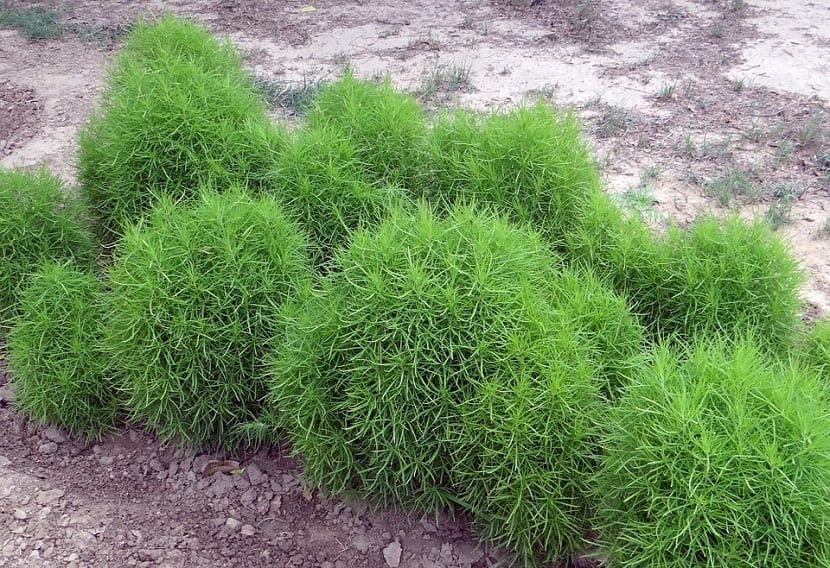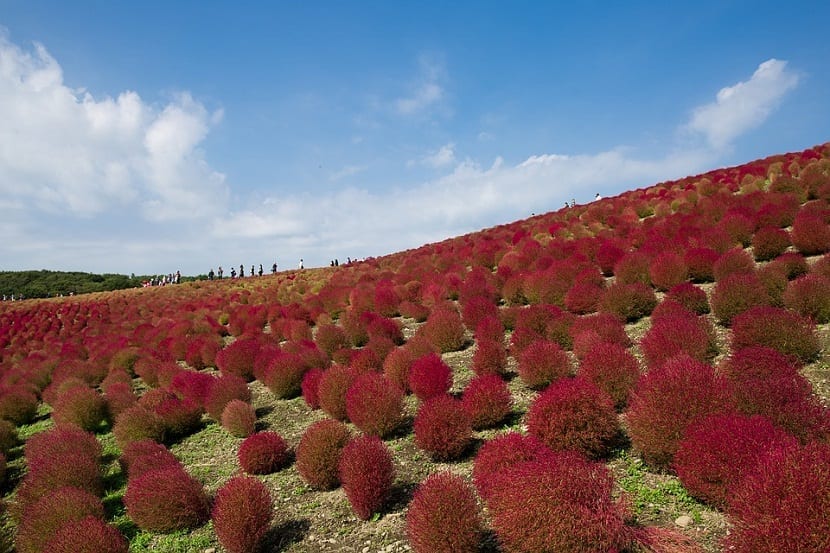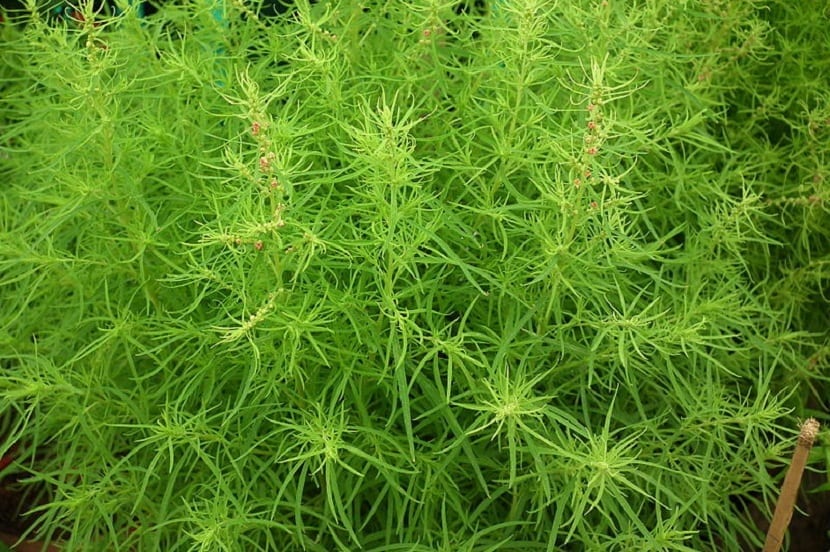
Kochia scoparia, also called Bassia scoparia, is an ornamental herbaceous plant suitable for creating borders, colored hedges in public and private gardens or for decorating terraces and balconies with its highly decorative leaves, which in winter take on a beautiful purple-red color.
Features

The kochia scoparia, also known as fireball cypress , is an annual semi-rustic plant of the Amaranthaceae family, native to Europe, Asia, Africa and Australia, widespread and also cultivated in Spain for the beauty of its posture and its foliage. decorative.
Kochia, especially the Tricophylla variety, has vigorous and compact foliage, which can reach up to two meters in suitable environmental conditions. The foliage is branched and the numerous branches are covered by many leaves. At some distance this plant is sometimes confused with santolina.
The leaves are elongated and pointed, have a soft and velvety texture, during spring - summer they are of an intense bright green color and with the arrival of autumn and little by little they tend to take on their typical bright red color.
In winter the plant, although it loses its beauty and compactness, never completely undresses. The flowers are small and not decorative. The seeds are ovate-elliptical, small, dark and have a high germination capacity.
Farming
This plant loves being in full sun, but away from the wind. It tolerates heat very well and is resistant to cold, but not to night frosts, so Kochia plants raised in pots can be had but in protected areas.
It adapts to any type of soil, but prefers a loose rich in organic substance, mixed with peat and a little sand and then well drained.
Plants that grow in the ground should be watered regularlyespecially during periods of prolonged drought and in summer. Potted Kochia plants need abundant supplies of water.
At the end of winter, the plant needs an adequate supply of nutrients and therefore a stunting well mixed with peat will allow it to properly cope with its vegetative cycle. Alternatively and always in spring, you have to apply granular fertilizer to the feet of the plant with a slow release specific for green plants.
Kochia plants are also easily grown in pots. The diameter of the pot varies according to its size and generally between 10 and 30 cm. In a bigger pot, the plant develops roots at the expense of the foliage.
Siembra
Sowing is carried out directly in the spring when the period of night frosts is completely avoided, preferably between April and May, when the night temperatures remain above 12-15 ° C.
In these environmental conditions, the germination of the seeds takes place during 15 days.
At temperatures higher or lower than suggested, the seeds are difficult to germinate. Until the appearance of the tender shoots of Kochia, the seedbed must always be kept moist but not soaked in water to prevent the fragile shoots from rotting.
En general, two seeds are placed per hole and later they are diluted eliminating the most fragile or less vigorous plants. When the seedlings have reached a height of about 15 cm, they can be transplanted independently.
To obtain very thick and highly decorative hedges, kochia plants are placed in 12-15 cm deep holes and at a distance of no more than 50 cm from each other.
Pests

It is a semi-raptic plant fairly resistant to common animal parasites, like aphids and mealybug, but sensitive to the spider mite that spins its small webs between the branches less exposed to the sun. Fungal diseases suffer from root rot if the soil is not well drained.
Adult Kochia plants growing in windy areas need support, while those grown in regions with a severe winter climate should be protected from frost. To prevent the roots of the potted plant from rotting, it is advisable to empty the plate after about 30 minutes to water.
Against possible spider mite infections, effective treatments with specific pesticides must be used. Kochia or Bassia scoparia plants are also in competition with weeds, so are useful for your periodic survival.
Hello, I would like to know how to germinate stretlizia seeds?
Hello Natalia.
Just the other day we published this post: Strelitzia.
A greeting.